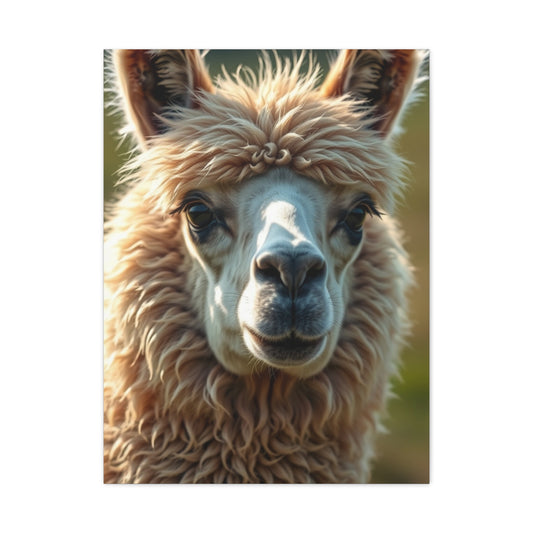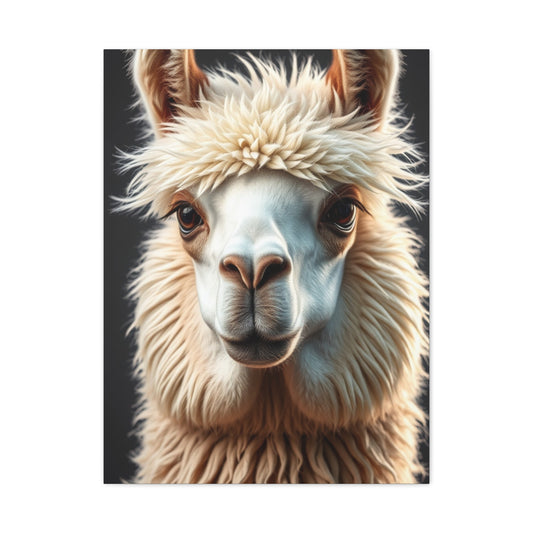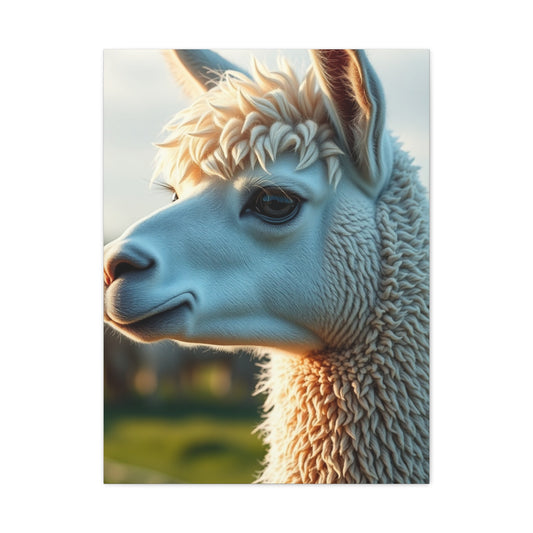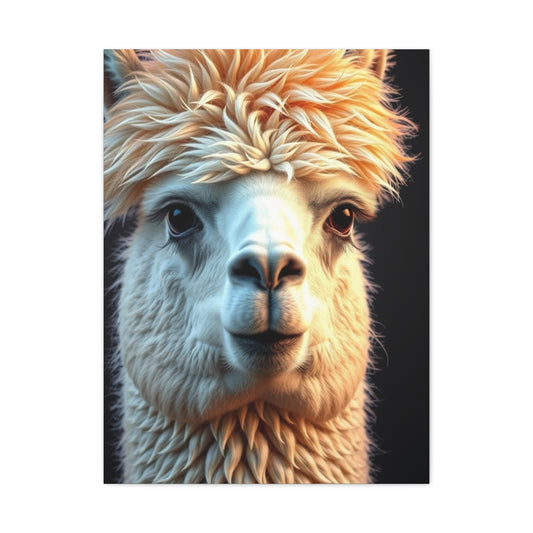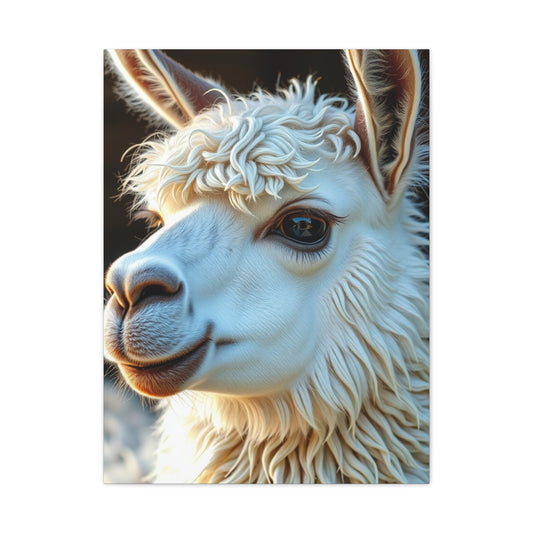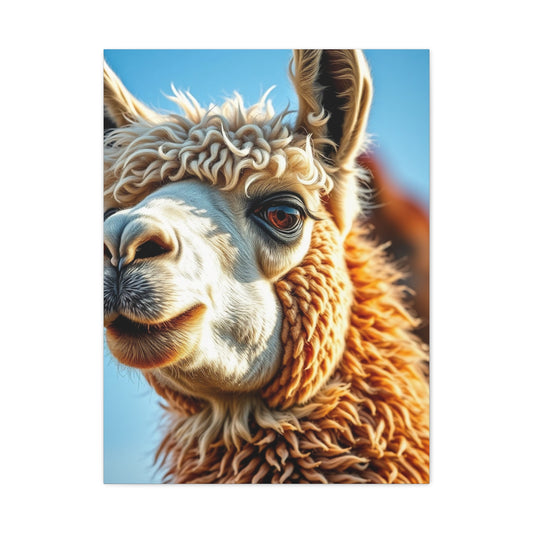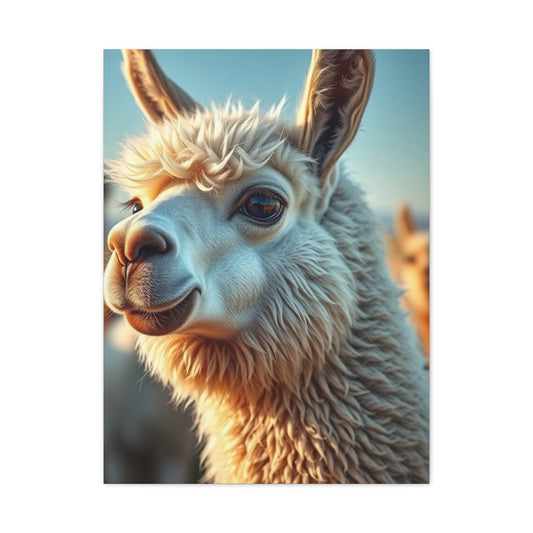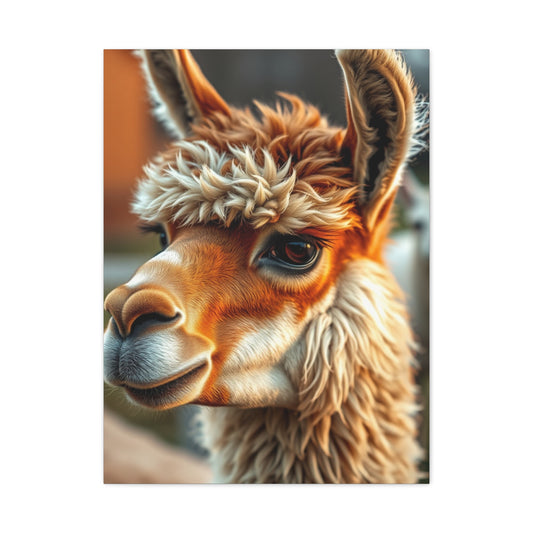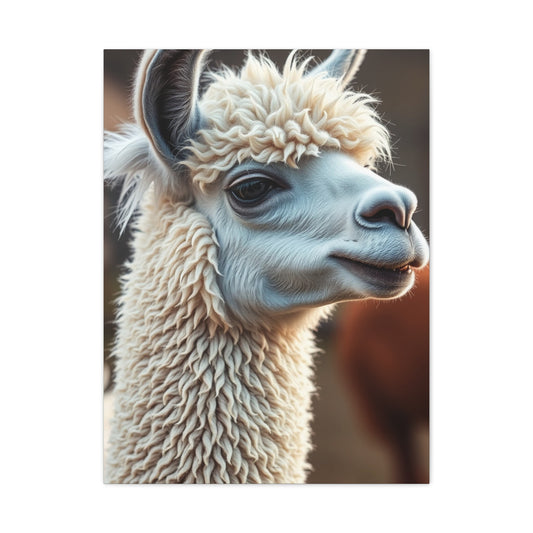The Charm of Handmade Quilling Alpaca Wall Art
In the ever-evolving world of home decor and artistic expression, handmade quilling alpaca wall art has emerged as a uniquely captivating trend that enchants art lovers, interior designers, and craft enthusiasts alike. This delicate yet vibrant art form fuses the intricate technique of quilling—a centuries-old paper craft—with the whimsical and endearing imagery of alpacas, animals renowned for their charm, grace, and gentle nature. The result is a stunning visual narrative that combines texture, color, and creativity, bringing warmth, personality, and a touch of nature-inspired elegance to any living space.
Quilling, also known as paper filigree, involves rolling, shaping, and gluing thin strips of paper to create detailed designs with depth and dimension. When applied to create alpaca motifs, this technique brings the soft, fluffy character of these animals to life in an unexpected medium. The interplay of layered paper coils and shapes mimics the texture of alpaca wool, while the careful selection of colors enhances their natural beauty. Each piece becomes a tactile experience, inviting viewers to appreciate the skill and patience required to craft such delicate art.
Beyond its technical appeal, quilling alpaca art holds cultural and symbolic significance. Alpacas are native to South America, particularly the Andes Mountains, where they have been domesticated for thousands of years and play a crucial role in the livelihoods of indigenous communities. Their symbolism often relates to qualities such as resilience, tranquility, and harmony with nature. Incorporating alpaca imagery into art not only pays homage to this rich heritage but also introduces a narrative of sustainability and connection to the natural world, values increasingly embraced by modern consumers.
The rise in popularity of handmade quilling alpaca wall art is also linked to a broader appreciation for artisanal crafts in contemporary interior design. As mass-produced decor saturates the market, people seek unique, handmade pieces that tell a story and express individuality. Quilling alpaca art fits this desire perfectly, offering a blend of tradition and innovation that complements various design styles—from bohemian and rustic to minimalist and eclectic.
In sum, handmade quilling alpaca wall art captivates audiences through its meticulous craftsmanship, cultural resonance, and aesthetic versatility. It transforms ordinary walls into galleries of personal expression and natural beauty, inviting us to celebrate creativity in all its textured, colorful forms.
An Ancient Art Form Reimagined
Quilling, also known as paper filigree, is a delicate and intricate craft that involves rolling, shaping, and gluing narrow strips of paper to create decorative designs. This art form traces its roots back to the Renaissance period when European monks, working in monasteries, used gilded strips of paper—often salvaged from the edges of old book bindings—to craft exquisite religious decorations and embellishments. The meticulous nature of quilling made it a perfect medium for these early artists to express devotion and creativity through detailed ornamentation.
As centuries passed, quilling spread beyond the confines of religious institutions and geographic borders, evolving into a popular decorative art practiced across various cultures in Europe, Asia, and the Americas. Each culture adapted the technique to reflect its own aesthetics and traditions, resulting in a diverse and rich legacy. Whether used to adorn furniture, create greeting cards, or decorate everyday objects, quilling has continually proven its versatility and enduring appeal.
At the heart of quilling lies the manipulation of paper strips into fundamental shapes such as coils, scrolls, teardrops, and spirals. These shapes serve as the building blocks for more complex patterns and images. Crafting these forms requires a combination of patience, steady hands, and artistic insight. Artists carefully control the tension and size of each coil, layering and arranging them with precision to achieve intricate designs that play with texture, color gradients, and spatial depth. Unlike flat paper art, quilling adds a three-dimensional quality, transforming simple strips of paper into vibrant reliefs. This interplay of light and shadow across the curled edges invites viewers to engage with the art on multiple sensory levels, making it a uniquely tactile experience.
In the modern era, quilling is experiencing a vibrant revival. Contemporary artists and hobbyists alike are pushing the boundaries of this traditional craft by incorporating mixed media elements such as beads, wire, and paint. They experiment with bold, vibrant color schemes and innovative techniques to create large-scale wall art and sculptures that resonate on both visual and emotional levels. This resurgence not only honors the art form’s rich history but also breathes new life into it, blending heritage with contemporary creativity.
Why Alpacas? The Symbolism and Appeal Behind the Choice
The choice of alpacas as a subject in quilling art is far from accidental. These gentle South American animals have won the hearts of people around the world, not only because of their soft, fluffy appearance but also due to their calm and approachable demeanor. Native to the high-altitude Andes Mountains, alpacas have been domesticated for thousands of years, cherished both for their luxurious wool and their deep cultural and symbolic significance.
Alpacas symbolize a range of qualities that resonate deeply with the ethos of handmade crafts like quilling. At their core, alpacas represent tranquility, resilience, and natural beauty—attributes that naturally align with the slow, meditative process of crafting art by hand. The softness of alpaca wool mirrors the delicate strips of paper used in quilling, while their rounded, gentle forms lend themselves perfectly to the flowing, tactile shapes that quilling artists strive to create. This harmony between subject and medium creates a natural synergy that enhances the emotional and visual impact of the artwork.
From a cultural and symbolic perspective, alpacas embody values such as community, cooperation, and harmony. As herd animals, alpacas thrive through social interaction and mutual support, reflecting ideals of peaceful coexistence and collective strength. These traits make alpacas a powerful metaphor in art for fostering connection and balance within one’s environment. When artists incorporate alpacas into wall art, they do more than create a pretty picture—they infuse the living space with an aura of calmness, positive energy, and a gentle reminder of the importance of relationships and harmony.
Moreover, alpacas hold special significance in the indigenous cultures of the Andes, where they are considered symbols of abundance and sustainability. Their wool, which has been a vital resource for centuries, represents a respectful relationship with nature—one based on giving and receiving without harm. This symbolic connection to nature resonates strongly with the values of many contemporary art lovers and home decorators who seek to bring elements of mindfulness and ecological awareness into their homes.
Ultimately, the appeal of alpacas in quilling art lies in their ability to connect viewers to both the tactile beauty of the craft and the deeper meanings they represent. The presence of alpaca motifs adds warmth, charm, and a story of peaceful coexistence and natural grace to any artistic creation, making them an enduring favorite in the world of handmade quilled art.
Crafting a Quilling Alpaca Wall Art Piece
Creating a handmade quilling alpaca wall art piece is an intricate and deeply rewarding artistic journey. It begins with the spark of an idea—a vision of the gentle alpaca, full of personality and charm, brought to life through delicate paper coils. From there, the artist carefully plans the composition, selecting colors and deciding on the shapes that will best capture the softness and texture of the alpaca’s fleece. Each strip of paper is then meticulously rolled, shaped, and arranged with precision, layer by layer, until the two-dimensional paper transforms into a vibrant, textured masterpiece full of depth and character.
1. Concept and Design
Every quilling alpaca wall art piece begins with a spark of inspiration. Artists often draw from the gentle nature of alpacas, their serene presence in natural landscapes, or the warm emotions these creatures evoke. The design phase is crucial: artists sketch preliminary outlines that focus on capturing the alpaca’s distinctive features—the soulful eyes, the fluffy, textured fur, the slender neck, and that signature gentle smile. Composition plays a vital role, balancing form, color, and negative space to create a harmonious and visually impactful piece. Thoughtful planning ensures that the final artwork feels both lifelike and artistically expressive.
2. Material Selection
Selecting the right materials is essential to bringing the concept to life. Quilling artists typically choose high-quality, acid-free paper strips available in a broad palette of colors and textures. For alpaca-themed art, neutral tones like creams, soft browns, grays, and pastel shades dominate, evoking the natural colors of alpaca fleece. However, artists often introduce vibrant accent colors to add personality and contrast, highlighting specific details such as eyes or background elements. Alongside paper, a well-equipped quilling toolkit includes precise glue, tweezers for delicate handling, quilling needles for rolling, and workboards for shaping. Some creators further enrich their pieces with mixed media accents—beads, fabric swatches, or metallic foils—to enhance texture and add a subtle sparkle.
3. Rolling and Shaping
At the heart of the process is the meticulous rolling and shaping of paper strips. Artists roll each strip into tight coils and then manipulate these coils into various shapes—loops, scrolls, teardrops, and scrolls—that serve as the foundational elements of the design. This step demands patience, dexterity, and a keen eye for detail, as the precision and consistency of each shape greatly influence the overall effect. When creating alpaca fur, the layering of these shapes imitates the soft, fluffy fleece, producing a tactile, three-dimensional texture that visually mimics the animal’s coat, giving the piece life and warmth.
4. Assembly and Mounting
Once all quilled elements are ready, the artist begins the assembly phase, carefully gluing each piece onto a sturdy base such as thick cardstock or a wooden panel. The arrangement is done with great attention to flow and depth, layering shapes to build dimension and movement within the artwork. The final piece might be framed behind glass to protect the delicate paper while showcasing its depth, or left unframed to emphasize the tactile nature of the coils and curves. Some artists apply protective coatings or sealants to preserve color vibrancy and prevent damage from environmental factors, ensuring the artwork remains vibrant and intact over time.
Incorporating Handmade Quilling Alpaca Art into Interior Design
Integrating handmade quilling alpaca wall art into interior spaces offers a unique opportunity to add personality, warmth, and an artisanal touch to home décor. These delicate, textured pieces serve as captivating focal points that bring softness and charm to any room. One popular way to showcase quilling alpacas is by placing them in living rooms or bedrooms, where their gentle forms can create a cozy and inviting atmosphere. They work particularly well in spaces with natural or rustic design themes, complementing earthy tones, wooden furniture, and soft textiles.
Quilling art can also brighten hallways or entryways, greeting guests with an unexpected burst of color and intricate detail. For modern interiors, pairing quilled alpaca art with minimalist frames and clean lines creates a striking contrast, blending traditional craft with contemporary style. Additionally, grouping multiple quilled pieces in a gallery wall format adds visual interest and tells a story through a collection of handmade artistry.
Feature Wall Centerpiece
A large quilling alpaca wall art piece can become the star of any room, serving as a captivating focal point on a feature wall. When paired with neutral tones or complementary colors throughout the space, it naturally draws the eye and anchors the room with a sense of organic elegance. Its textured, three-dimensional quality adds depth, making the wall visually dynamic and inviting.
Gallery Wall Inclusion
Smaller quilling alpaca artworks lend themselves beautifully to gallery walls. Arranged alongside photographs, paintings, or other mixed-media pieces, these delicate paper creations introduce texture and dimension, transforming a simple collection into an engaging, tactile display. The contrast between flat art and quilling’s raised forms enriches the visual experience and invites closer inspection.
Nursery or Children’s Room Décor
The gentle, playful nature of alpacas, combined with the soft, fluffy textures achieved through quilling, makes this art particularly well-suited for nurseries or children’s rooms. These whimsical pieces add warmth and comfort to the space, sparking imagination and joy while creating a soothing environment for little ones.
Office or Creative Studio Inspiration
In workspaces, particularly studios or offices for creatives, quilling alpaca art can serve as more than decoration—it becomes a source of inspiration. Its intricate craftsmanship reminds viewers of the values of patience, gentleness, and attention to detail, qualities that are essential in any creative endeavor. Displaying such artwork can foster a calm, focused atmosphere conducive to thoughtful work.
Diverse Spectrum of Camelid-Themed Art
The world of camelid-inspired wall art encompasses an extraordinary variety of artistic expressions, each offering unique characteristics and appeal. Cute cartoon prints represent one of the most popular categories, featuring simplified, endearing interpretations that emphasize the naturally charming qualities of these animals. These representations often incorporate exaggerated features such as oversized eyes, fluffy textures, and gentle expressions that instantly evoke feelings of warmth and happiness.
Watercolor paintings offer a more sophisticated approach, utilizing the fluid, translucent qualities of the medium to create soft, dreamy interpretations. The unpredictable nature of watercolor techniques allows artists to capture the ethereal quality of these creatures' fleece while creating atmospheric backgrounds that enhance the overall composition. These pieces often feature delicate color transitions and organic shapes that mirror the natural beauty of their subjects.
Family portrait compositions provide intimate glimpses into the social nature of these herd animals, depicting multiple generations or groups in harmonious arrangements. These works celebrate the strong family bonds characteristic of camelid communities while creating compelling visual narratives that viewers find deeply engaging. The compositions often incorporate natural landscapes or pastoral settings that enhance the storytelling aspect of the artwork.
Minimalist line art represents the essence of these creatures through clean, simple strokes that capture their distinctive silhouettes and proportions. This approach appeals to contemporary design sensibilities while maintaining the essential character that makes these animals so recognizable and beloved. The simplicity of line art allows for versatile placement options and seamless integration with various design schemes.
Playful illustrations embrace the whimsical nature of these subjects through creative interpretations that might include anthropomorphic elements, fantastical settings, or humorous situations. These pieces often incorporate bright colors, dynamic compositions, and imaginative scenarios that appeal particularly to younger audiences while maintaining universal charm.
Bohemian and Nature-Inspired Art
The bohemian aesthetic has found perfect expression through camelid-themed artwork that incorporates natural elements and free-spirited design principles. Boho-style decor featuring these subjects often includes intricate patterns, earth-toned color palettes, and organic textures that reflect the nomadic lifestyle traditionally associated with these animals in their native habitats.
Floral crown compositions represent a particularly enchanting subcategory, where artists adorn these gentle creatures with wreaths of flowers, creating romantic and feminine interpretations that celebrate both the beauty of nature and the inherent grace of the subjects. These pieces often incorporate seasonal blooms, wildflowers, or exotic botanical elements that add layers of meaning and visual interest.
Nature scene compositions place these animals within their natural environments or idealized pastoral settings, creating comprehensive landscapes that tell stories about harmony between animals and their surroundings. These works might feature mountain vistas, rolling meadows, or peaceful farmyard scenes that evoke feelings of tranquility and connection with rural life.
Abstract interpretations push the boundaries of traditional representation, using these recognizable forms as starting points for explorations in color, shape, and composition. These pieces might deconstruct familiar silhouettes into geometric patterns or blend realistic elements with fantastical backgrounds, creating unique artistic statements that challenge conventional expectations while maintaining essential recognizability.
Nursery and Child-Friendly Design
The inherent gentleness and appealing nature of these South American camelids make them ideal subjects for children's spaces, where safety, comfort, and visual stimulation are paramount concerns. Nursery art featuring these subjects often emphasizes soft colors, rounded forms, and peaceful expressions that create soothing environments conducive to rest and relaxation.
The selection of color palettes for child-oriented spaces requires careful consideration of both aesthetic appeal and psychological impact. Soft pastels, muted earth tones, and gentle gradients work particularly well with camelid subjects, creating harmonious environments that support healthy development while maintaining visual interest. These color choices also provide flexibility for coordinating with various nursery themes and furniture selections.
Size considerations become crucial when selecting pieces for children's rooms, as artwork should be proportionate to the space while remaining safely positioned. Smaller prints can be grouped in clusters to create engaging gallery walls, while larger statement pieces can serve as focal points that anchor the room's design scheme.
Interactive elements, such as removable wall decals featuring these subjects, offer flexibility for growing children who may want to rearrange their spaces or update their decor as their tastes evolve. These options provide the visual impact of permanent artwork while accommodating the changing needs of developing children.
Humorous and Quote-Based Art
The naturally expressive faces and seemingly perpetual smiles of these creatures lend themselves perfectly to humorous artistic interpretations that bring joy and laughter into living spaces. Funny quote posters featuring clever wordplay, puns, or inspirational messages create engaging focal points that serve both decorative and motivational purposes.
The selection of typography plays a crucial role in the effectiveness of quote-based artwork. Hand-lettered fonts often complement the organic nature of the subjects, while modern sans-serif options can create striking contrasts that emphasize the contemporary relevance of traditional subjects. The integration of text and imagery requires careful balance to ensure both elements remain legible and visually appealing.
Color psychology becomes particularly important in humorous pieces, as vibrant, cheerful hues can enhance the comedic impact while creating positive emotional responses. Bright yellows, cheerful oranges, and playful blues work particularly well with lighthearted themes, though more subdued palettes can be equally effective when the humor derives from clever wordplay rather than visual exuberance.
Color Techniques and Visual Impact
Vibrant color splash techniques create dramatic visual impact by combining realistic subject matter with bold, abstract color applications. These pieces often feature traditional representations of the animals surrounded by or overlaid with dynamic color bursts that add contemporary flair to classic subjects.
The strategic use of contrasting colors can create focal points that draw attention while maintaining overall compositional harmony. Complementary color schemes, such as warm oranges against cool blues, can create visual tension that energizes spaces, while analogous palettes provide more subtle, sophisticated effects.
Gradient techniques allow artists to create smooth transitions between colors, creating atmospheric effects that can suggest different times of day, seasonal changes, or emotional moods. These subtle variations add depth and complexity to otherwise simple compositions.
Geometric and Modern Design Approaches
The integration of geometric patterns with organic camelid forms creates compelling juxtapositions that appeal to contemporary design sensibilities. These approaches might incorporate triangular backgrounds, hexagonal frames, or abstract geometric overlays that provide structure and visual interest while maintaining focus on the central subjects.
Modern graphic art interpretations often simplify complex forms into essential elements, using bold colors and clean lines to create striking visual statements. These pieces work particularly well in contemporary interiors where simplicity and impact are valued over decorative complexity.
The use of negative space becomes crucial in modern interpretations, as strategic omissions can be as important as included elements in creating effective compositions. Well-planned negative space provides visual rest areas while emphasizing the importance of featured elements.
Seasonal and Weather-Themed Variations
Cozy winter prints featuring these subjects often incorporate seasonal elements such as snowflakes, warm scarves, or holiday decorations that create timely relevance while maintaining year-round appeal. These pieces can help create seasonal transitions in home decor without requiring complete redecoration.
The incorporation of weather elements, such as gentle rain, autumn leaves, or spring flowers, provides narrative context while adding visual complexity. These details help create emotional connections between viewers and artwork while suggesting stories that extend beyond the immediate image.
Seasonal color palettes can dramatically alter the mood and impact of camelid-themed artwork. Cool blues and whites suggest winter serenity, while warm oranges and reds evoke autumn comfort. Spring greens and soft yellows create feelings of renewal and growth.
Silhouette Art
Silhouette wall decals offer sophisticated alternatives to full-color artwork, providing elegant visual impact through simplified forms. These pieces rely on recognition of characteristic shapes rather than detailed rendering, creating timeless appeal that transcends specific artistic styles.
The strategic placement of silhouette art can create dramatic effects through the interaction of positive and negative space. Large silhouettes can serve as anchoring elements in room design, while smaller grouped silhouettes can create rhythmic patterns across wall surfaces.
Backlit silhouettes provide additional design possibilities, as strategic lighting can transform static images into dynamic focal points that change throughout the day. These installations require careful planning but can create stunning effects that elevate simple artwork into architectural elements.
Botanical and Desert-Themed Combinations
The pairing of camelid subjects with cacti and other desert plants creates thematically coherent compositions that celebrate the geographic origins of these animals while incorporating popular contemporary design elements. These combinations often feature the contrast between soft, organic animal forms and the sharp, geometric structures of desert vegetation.
Succulent gardens provide another popular botanical pairing, as these low-maintenance plants complement the rustic, natural aesthetic often associated with camelid imagery. The combination suggests themes of resilience, adaptation, and natural beauty that resonate with many contemporary viewers.
The incorporation of other South American flora, such as exotic flowers or native grasses, can create comprehensive landscapes that provide educational value while maintaining decorative appeal. These detailed compositions often reward close examination while maintaining overall visual coherence.
Handcrafted and Artisanal Approaches
Hand-painted canvas pieces offer unique characteristics that distinguish them from mass-produced prints, including subtle variations in brushwork, texture, and color application that create one-of-a-kind artworks. These pieces often command higher prices but provide exceptional value through their artistic authenticity and individual character.
The selection of canvas textures can significantly impact the final appearance of painted works. Smooth surfaces allow for detailed rendering and precise color application, while rougher textures create more rustic, organic effects that can enhance certain stylistic approaches.
Mixed media approaches combining painting with other materials, such as fabric, paper, or natural elements, create dimensional effects that add tactile appeal to visual artwork. These pieces often incorporate the actual fleece textures of the subjects or other materials that enhance thematic coherence.
Fashion-Forward and Contemporary Styling
Sunglasses and other fashionable accessories have become popular elements in contemporary camelid artwork, creating humorous juxtapositions between rural subjects and urban style elements. These pieces often appeal to younger audiences while maintaining universal charm through clever visual contrasts.
The incorporation of contemporary fashion elements allows traditional subjects to remain relevant to current cultural trends while maintaining their timeless appeal. This approach creates bridges between different generational preferences and design sensibilities.
Color coordination between fashionable accessories and overall compositions requires careful consideration to maintain visual harmony while highlighting intended contrasts. Metallic accents, bold patterns, or unexpected color combinations can create striking effects when thoughtfully applied.
Whimsical and Fantastical Artistic Interpretations
Whimsical doodle styles embrace the playful potential of camelid subjects through loose, expressive drawing techniques that prioritize charm and personality over realistic representation. These pieces often incorporate unexpected elements, such as rainbow manes, magical settings, or anthropomorphic characteristics that expand creative possibilities.
The balance between whimsy and sophistication requires careful consideration, as overly childish interpretations may limit the appeal and placement options of finished pieces. Successful whimsical art maintains universal appeal while celebrating the inherent charm of its subjects.
Fantasy elements, such as wings, unicorn horns, or magical landscapes, can transform familiar subjects into extraordinary beings that capture imagination while maintaining recognizable characteristics. These interpretations often appeal to those seeking unique, conversation-starting artwork.
Cultural Significance and Symbolic Meanings
The cultural importance of these animals in their native South American cultures adds layers of meaning to contemporary artistic interpretations. Understanding these cultural connections can enhance appreciation for artwork while providing educational opportunities for viewers interested in learning about different cultures and traditions.
Traditional Andean textiles and patterns often feature these animals as central motifs, representing prosperity, protection, and community values. Contemporary artists frequently draw inspiration from these traditional sources while creating modern interpretations that honor cultural heritage.
The symbolism associated with these gentle creatures, including qualities such as patience, peace, and prosperity, makes them particularly appropriate for home environments where these values are cherished. The presence of such imagery can serve as daily reminders of desired qualities and aspirations.
Room-Specific Design Considerations
Living room placement of camelid-themed artwork requires consideration of scale, viewing distances, and lighting conditions to ensure optimal visual impact. Large statement pieces work well above sofas or as focal points on feature walls, while smaller pieces can be grouped to create interesting galleries.
Bedroom applications often benefit from more subdued color palettes and peaceful compositions that promote relaxation and restful sleep. Gentle expressions, soft textures, and calming backgrounds work particularly well in these intimate spaces.
Kitchen and dining area installations can incorporate food-related themes or farm-to-table concepts that celebrate the agricultural origins of these animals. These pieces often work well with rustic or farmhouse design schemes while adding personality to utilitarian spaces.
Home office environments can benefit from the motivational and stress-reducing qualities associated with these gentle subjects. Pieces featuring inspirational quotes or serene compositions can help create productive, positive work environments.
Sizing and Scaling for Different Spaces
Large-scale installations create dramatic impact in spacious rooms with high ceilings, where substantial artwork is needed to maintain proportional relationships with architectural elements. These pieces often serve as primary focal points that anchor entire room designs.
Medium-sized pieces offer versatility for most residential applications, providing significant visual impact without overwhelming smaller spaces. These dimensions work well for standard wall heights and typical furniture arrangements found in most homes.
Small-scale artwork allows for creative grouping arrangements and detailed viewing that can be particularly effective in intimate spaces or areas where viewers will be in close proximity to the pieces. These works often feature intricate details that reward careful examination.
Framing and Presentation Options
Frame selection significantly impacts the overall presentation and style of camelid-themed artwork. Rustic wooden frames complement pastoral themes, while sleek metal frames can create contemporary effects that emphasize modern interpretations.
Matting choices provide additional opportunities for customization, as colored mats can echo specific hues within the artwork or provide neutral backgrounds that allow colors to appear more vibrant. The width of matting also affects the perceived importance and formality of framed pieces.
Gallery-style hanging systems offer flexibility for changing displays while maintaining professional presentation standards. These systems work particularly well for collectors who enjoy rotating their displays or adjusting arrangements based on seasonal preferences.
Lighting Considerations for Optimal Display
Natural lighting can dramatically affect the appearance of artwork throughout the day, as changing light conditions alter color perception and create different moods. North-facing walls typically provide the most consistent natural light for artwork display.
Artificial lighting solutions, including picture lights, track systems, or strategically placed lamps, allow for controlled illumination that can enhance specific qualities of individual pieces. Warm light tends to enhance earth tones, while cooler light can make brighter colors appear more vibrant.
The prevention of UV damage requires consideration when selecting lighting and placement options, as prolonged exposure to direct sunlight can cause fading and deterioration of artwork. UV-filtering glazing provides protection for valuable pieces displayed in bright areas.
Creating Cohesive Gallery Arrangements
Theme-based groupings allow for the creation of comprehensive displays that tell stories or explore related concepts through multiple pieces. These arrangements work particularly well when pieces share common elements such as color palettes, artistic styles, or subject matter approaches.
Size variation within gallery walls creates visual rhythm and prevents monotonous arrangements that can appear static or uninteresting. The strategic placement of different-sized pieces can guide viewer attention and create dynamic viewing experiences.
Spacing considerations ensure that individual pieces maintain their identity while contributing to overall composition effectiveness. Generally, 2-3 inches between frames provides adequate separation while maintaining visual unity.
Color Coordination with Existing Decor
Existing color schemes within rooms should be considered when selecting camelid-themed artwork to ensure harmonious integration with established design elements. Complementary colors can create exciting contrasts, while analogous schemes provide more subtle, sophisticated effects.
Accent color opportunities allow artwork to introduce new hues into existing color schemes without overwhelming established palettes. Small amounts of unexpected colors can create visual interest while maintaining overall harmony.
Neutral artwork options provide flexibility for rooms where color schemes may change frequently or where maximum decorative flexibility is desired. These pieces can adapt to various seasonal decorations or furniture rearrangements without losing their effectiveness.
Material Quality and Longevity Factors
Paper quality significantly affects both the immediate appearance and long-term durability of printed artwork. Acid-free papers resist yellowing and deterioration, while heavier weights provide more substantial feel and better resistance to handling damage.
Ink quality determines color accuracy, fade resistance, and overall longevity of printed pieces. Archival-quality inks maintain their vibrancy for decades when properly displayed, making them worthwhile investments for permanent installations.
Canvas treatments and primers affect both the appearance and durability of painted works. Properly prepared surfaces resist cracking, warping, and other forms of deterioration that can compromise artistic integrity over time.
Budget-Conscious Options and Value Considerations
Print-on-demand services provide access to extensive varieties of camelid-themed artwork at affordable prices, though quality can vary significantly between providers. Research and sample ordering can help identify reliable sources for budget-conscious buyers.
DIY printing options allow for customization and cost control, though proper equipment and materials are necessary to achieve professional-quality results. Home printing works best for smaller pieces and temporary installations.
Original artwork represents significant investments but provides unique value through artistic authenticity and potential appreciation over time. Local artists and art students often offer original pieces at more accessible price points than established gallery artists.
Emerging Trends and Innovation in Camelid Art
Digital art techniques continue to expand creative possibilities for camelid-themed artwork, allowing for effects and styles impossible with traditional media. These approaches often combine the best aspects of different artistic traditions while pushing boundaries of creative expression.
Augmented reality integration represents an exciting frontier where static artwork can be enhanced with interactive digital elements that respond to viewer interaction. These pieces bridge traditional wall art with contemporary media experiences.
Sustainable art practices are becoming increasingly important to environmentally conscious consumers, leading to innovations in eco-friendly materials, production methods, and packaging that reduce environmental impact while maintaining artistic quality.
Care and Preservation Best Practices
Dust removal techniques vary depending on the materials and finishes of specific pieces. Soft brushes work well for textured surfaces, while smooth prints may benefit from gentle cloth cleaning. Regular dusting prevents accumulation that can cause permanent damage.
Humidity control helps prevent warping, mold growth, and other moisture-related damage that can compromise artwork integrity. Maintaining stable humidity levels between 45-55% provides optimal conditions for most artwork materials.
Storage solutions for rotating collections should provide protection from dust, light, and physical damage while allowing for easy access and identification. Acid-free materials and proper ventilation help prevent deterioration during storage periods.
Sustainable Choices
Eco-friendly printing options utilize vegetable-based inks, recycled papers, and renewable energy sources to reduce environmental impact while maintaining quality standards. These choices appeal to environmentally conscious consumers while supporting sustainable practices.
Local artist support reduces transportation-related environmental impacts while strengthening community economies and providing opportunities for personal interaction with creators. Local purchases often offer unique perspectives and regional character unavailable through mass-market sources.
Packaging reduction strategies minimize waste associated with artwork purchases while maintaining protection during shipping and storage. Many artists and suppliers now offer minimal, recyclable packaging options that balance protection with environmental responsibility.
Conclusion
The enchanting world of llama-alpaca-wall-art offers boundless opportunities for personal expression, home decoration, and emotional connection through the universal appeal of these beloved South American camelids. From whimsical cartoon interpretations to sophisticated minimalist designs, the diverse range of artistic approaches ensures that every individual can find pieces that resonate with their personal style and living space requirements.
The journey of selecting and displaying camelid-themed artwork extends far beyond simple decoration, encompassing considerations of cultural appreciation, environmental responsibility, emotional wellbeing, and long-term satisfaction. The inherent charm of these gentle creatures, combined with their rich cultural significance and symbolic meanings, creates artwork that serves multiple purposes while bringing joy and character into any environment.
Whether choosing playful nursery prints that spark childhood imagination, sophisticated gallery pieces that demonstrate artistic appreciation, or humorous quote posters that bring daily smiles, the selection process should reflect personal values and lifestyle preferences. The investment in quality materials, proper presentation, and thoughtful placement ensures that chosen pieces will provide lasting enjoyment while maintaining their visual impact and cultural significance.
The growing popularity of these subjects reflects broader cultural trends toward authenticity, connection with nature, and appreciation for gentle, positive imagery in our increasingly complex world. As artistic techniques continue to evolve and new creative approaches emerge, the future of camelid-themed artwork promises even greater diversity and innovation while maintaining the timeless appeal that has made these subjects beloved worldwide.
The consideration of practical factors such as sizing, lighting, color coordination, and maintenance requirements ensures that artistic choices complement rather than complicate daily living. The balance between aesthetic appeal and functional practicality creates successful installations that enhance rather than overwhelm existing design schemes while providing flexibility for future changes and updates.
Ultimately, the selection and display of llama-alpaca-wall-art represents an opportunity to create personal sanctuaries that reflect individual tastes while celebrating the universal qualities of peace, gentleness, and natural beauty embodied by these remarkable animals. The investment in thoughtfully chosen artwork creates lasting value that extends beyond monetary considerations to encompass emotional satisfaction, cultural appreciation, and daily inspiration that enriches the human experience of home and personal space.

